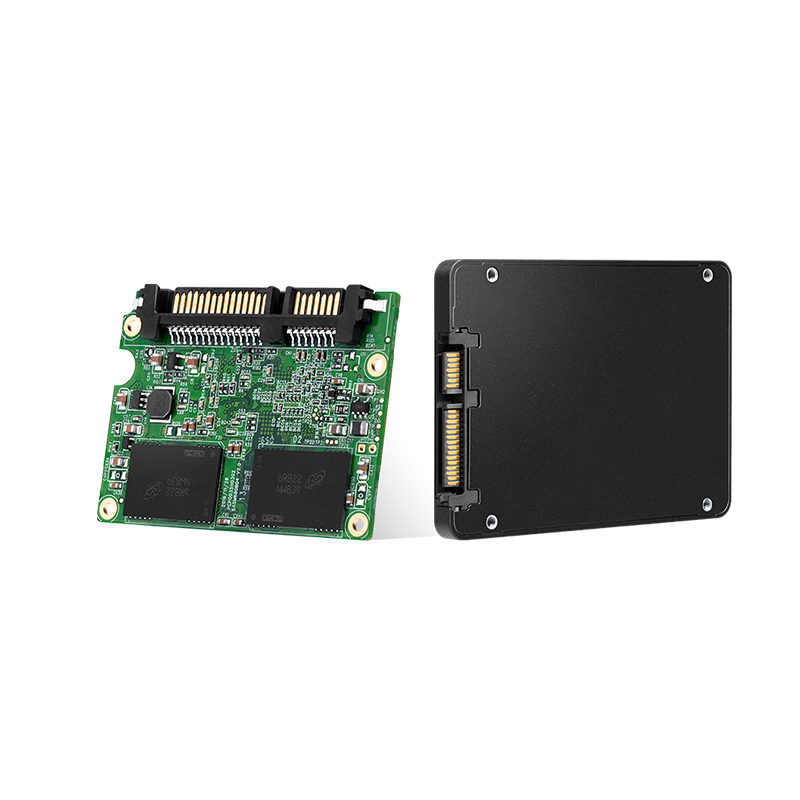Introduction
Solid-state drives are widely appreciated for their speed and efficiency, but like any storage medium, they are not immune to data integrity issues under certain conditions. A commonly raised concern is whether SATA SSDs are vulnerable to data corruption or damage when power is suddenly lost. This article examines how SATA SSD suppliers address this challenge, what risks remain, and how different design features impact resilience to power interruptions.

Understanding the Power Loss Risk
Unlike traditional hard drives, SSDs lack moving parts, which makes them more durable in physical terms. However, they depend on complex data processing and caching mechanisms. During active write operations, data often resides temporarily in volatile memory such as DRAM or SLC cache before being permanently written to NAND flash. If a power outage occurs during this process, the drive may not have enough time to commit the data, causing partial writes or data loss. In bad cases, the file system may become corrupted, or the SSD firmware itself could become unstable.
The Role of Power Loss Protection (PLP)
To combat this risk, many SATA SSD suppliers integrate Power Loss Protection into their products. PLP typically involves small capacitors that store just enough residual energy to allow the SSD controller to complete pending write operations during an abrupt shutdown. This hardware-based solution is common in enterprise-class SSDs, which are used in data centers and critical systems where uptime and data integrity are paramount. While not all consumer-level SSDs include PLP, some higher-end models do, offering a valuable safeguard in volatile environments.
Firmware-Level Countermeasures
Beyond hardware, SATA SSD suppliers also design firmware strategies to reduce the impact of unexpected power loss. These include techniques such as journaling, transactional writes, and wear-leveling algorithms that reduce data corruption risks. Some drives are programmed to retry or verify writes upon reboot, helping to recover any inconsistencies caused by sudden interruptions. Although these methods do not guarantee absolute protection, they significantly reduce the chance of catastrophic failure.
Product Segmentation and Vulnerability Levels
The degree of protection varies depending on the market segment the SSD is intended for. Consumer-grade SSDs are often designed with cost-efficiency in mind and may include limited or no PLP features. These are typically sufficient for personal computers where the risk of frequent power loss is lower or mitigated with a battery backup. On the other hand, industrial and enterprise-grade SATA SSDs are rigorously engineered to withstand harsher conditions, with both physical and software-based protections in place to preserve data integrity.
Practices for Risk Mitigation
Even with protections in place, no SSD is entirely immune to the effects of sudden power loss. Users can reduce risks by regularly backing up data, using devices with built-in PLP, and ensuring systems are equipped with uninterruptible power supplies (UPS). It is also advisable to avoid using SSDs near full capacity, as this increases reliance on temporary buffers and reduces the drive’s ability to manage writes efficiently under stress.
Conclusion
While SATA SSDs do face potential risks from sudden power loss, the extent of vulnerability largely depends on how well the drive is designed. Reputable SATA SSD suppliers address this challenge through a combination of hardware safeguards like PLP and intelligent firmware algorithms. Enterprise users benefit from these features, though even some consumer models now offer basic protections. With proper drive selection and usage habits, users can significantly reduce the risk of data damage due to unexpected shutdowns.
 EN
EN CN
CN ES
ES RU
RU







